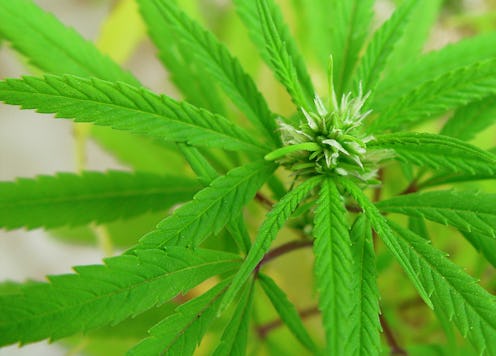
Not to freak you out or anything, but the long-term effects of marijuana may not be as benign as you think: A new review from Australia’s University of Queensland examines 20 years’ worth of data surrounding regular cannabis use, and there’s actually quite a bit to be concerned about. Bad news for supporters of the legalization of marijuana? Maybe. Here’s the deal:
Review Wayne Hall, a professor and director of the University of Queensland’s Center for Youth Substance Abuse Research, analyzed evidence dated as far back as 1993 to see what it might be telling us about marijuana’s long-term health effects. Live Science has a pretty comprehensive write-up, so head on over there for some in-depth discussion; in the meantime, though, here are your talking points:
- Teens who regularly use marijuana are twice as likely to drop out of school.
- They also experience cognitive impairment and psychoses as adults. Only seven in 1,000 non-users suffered from things like disordered thinking, hallucination, or delusions, while 14 out of 1,000 regular users did. Additionally, a Swedish study with a sample size of 50,000 young men found that those who had used marijuana 10 or more times by the age of 18 were twice as likely to be diagnosed with schizophrenia within the next 15 years.
- There may be a link between regular cannabis use in adolescence with the use of other drugs.
- Middle-aged people who smoke up regularly are at increased risk for heart attacks.
- People who drive under the influence of marijuana double their risk of being in a car crash.
- One in 10 daily marijuana users ends up dependent on it.
Of course, there’s a lot we still don’t know, too. For example, the review wasn’t able to draw any conclusions about the effect of pot on respiratory function or whether it’s linked to respiratory cancer — the reason being that most people who smoke pot also have smoked, or still do smoke, tobacco. Furthermore, there’s a little bit of a chicken-or-the-egg question floating around the link between marijuana and mental health issues: We haven’t yet determined whether the issues are caused by the drug, or whether people who already have the issues are more likely to use the drug in the first place.
It’s also worth noting that the amount of THC — the psychoactive ingredient that gives pot its punch — has increased in the U.S. over the past several decades; although it was at less than two percent in 1980, by 2006, it had reached 8.5 percent. We don’t know what effect this has had on user’s health, though, so a lot remains in the dark: It’s possible that, if users adjust their doses such that they use less of the drug to get the same psychological effects, there’s no increase in harm at all; if they don’t, though — and there’s limited evidence that suggests that this is the case — they’re getting larger doses of THC each time they use today than they did back in the day.
The takeaway? As Hall told Live Science, “The perception that cannabis is a safe drug is a mistaken reaction to a past history of exaggeration of its health risks” — but at the same time, it’s still “not as harmful as other illicit drugs such as amphetamine, cocaine, and heroin, with which it is classified under the law in many countries, including the USA.” We still seem to be pretty confused about how to treat the drug, though, which I think is reflected in the review’s analysis. On the one hand, we have Colorado’s governor, John Hickenlooper, going on record saying the decision to legalize marijuana in that state was “reckless”; a medical marijuana bill stalling in Pennsylvania, rendering it unlikely to get a vote before the end of the year; and police in Georgia mistaking okra for marijuana, subsequently dispatching a helicopter and a bunch of heavily-armed deputies to one guy’s house and scaring the pants off him in the process. But on the other, we have pot-laced pizza sauce and cold-brew coffee becoming a thing, weed fairies in Vancouver and Seattle, and so on. Talk about ambivalence.
I’ve never actually used marijuana in any form (it never really appealed to me — shrug), but I think we need to do way more research about the stuff before we can draw anymore conclusions. What’s the proper dosage over a long-term period of time to reap the medical benefits for those who need it while still keeping the risks as low as possible? Hopefully we’ll be able to figure it out eventually — and stop moralizing about it in the process. Like many things, it's not whether something is "good" or "bad" that matters — it's how you use it.
Images: floresyplantas.net/Flickr; Giphy (2)